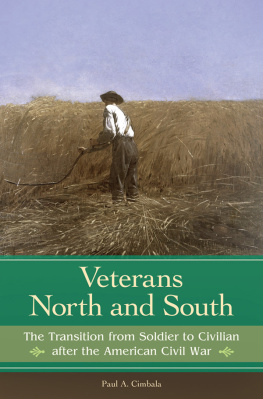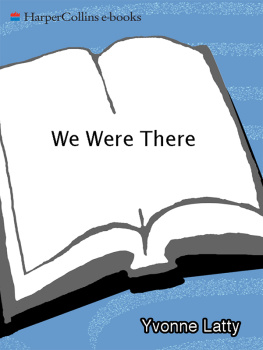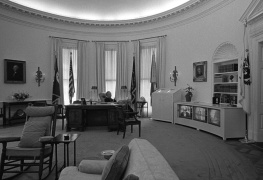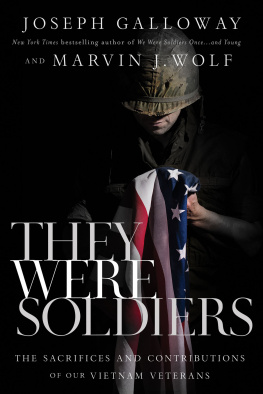The Wages of War
When Americas Soldiers Came Home: From Valley Forge to Vietnam
Richard Severo and Lewis Milford

This book is respectfully dedicated to Daniel Shays and to the forgotten men and women who fought by his side more than two hundred years ago; and to the men and women who served only yesterday in Korea and Vietnam, but who were quickly no less forgotten.
Prologue
Nothing had really changed in the last two hundred years. Or so it seemed. From Colrain to Amherst, we took back roads that slithered gray and yellow across calloused hills. Ancient red barns and pale white clapboard farmhouses clung to pastures fractured with dark rock, which only hinted at a land that was as hostile to growing crops as it was lovely in the scarlet of October.
But surely something must have changed in western Massachusetts since a Revolutionary War veteran and reluctant rebel named Daniel Shays had labored and suffered and inspired and then run for his very life. We made a long loop and came north on Route 202. Where 202 crossed Route 9, just opposite a little sandwich shop called Mikes Place, there was a sign announcing that from here on, Route 202 was now the Daniel Shays Highway. Well, that was different. In 1786, when James Bowdoin was Governor, Boston was hardly predisposed to name a road after Daniel Shays. A debtors cell maybe. Certainly not a state road that would be used by the God-fearing and law-abiding people of Massachusetts to further commerce and prosperity.
For Daniel Shays was an American dissident. He had a principled grievance against the British, and so he fought the British. But when he returned to his farm after the war, he found that he had a principled grievance against the new Government in Boston, too, the same American Government he had fought so hard to establish. The Government expected everyoneimpoverished veterans and subsistence farmers includedto pay debts promptly with hard currency. Harsh and unyielding, Massachusetts law permitted creditors to exact retribution against debtors who could not pay, including the use of the court system to send them to prison. People certainly wanted to pay, but the hard currency of choice, which was British, not American, was in short supply. Many of the people Shays knew lost their farms and all else they owned. The debtors, Shays among them, were thus inexorably drawn into a confrontation with the bureaucrats and merchant princes of Boston. When mere protest failed, Shays and his friends tried to stop the courts from sitting, and that, in turn, brought an army of mercenary militiamen down on them. Those who were with Shays resisted the injustices of their Government just as hard, and with every bit as much courage and dignity as any Soviet or South African or Polish or Czech dissident of the twentieth century. But as we drove toward his hometown of Pelham and a celebration that would honor his memory, we realized that there were many Americans who had been taught that Shays was a rebel and an outlaw. And many more hadnt the faintest idea of who Daniel Shays was.
Daniel Shays Highway led directly up to Pelham. We passed nubs of stone walls that were young when Shays was old. Sometimes there were piles of cut wood piled neatly against the walls. The land around us rose to a wooded plateau in the east, then swooped down toward the valley that formed the watershed for the enormous Quabbin Reservoir, Bostons drinking-water supply. There were stands of hemlock everywhere, as there were in Shays time, hemlock that Shays and his men sprigged for their hats; evergreen symbols of resistance to the conscienceless stiff-necked Government in Boston. The hemlock had been joined, a century after Shays disappeared, by elm and large oak and scrub oak, by balsam fir, maple, and scotch pine. The forest that now attended the Daniel Shays Highway may have been of interest to the leaf-seekers up from New York, but would not have been so comforting to Shays rebels, who preferred solid hemlock to hide them from the thrusted bayonets of the privately financed army from Boston that hunted them, almost always cornered them, and sometimes killed them with musket and grapeshot.
The creation of the Quabbin in the 1930s had taken a third of Pelham, including the remains of Shays house and his farm. His house was in the watershed but was not underwater, only out of bounds to anyone who might want to see it. It was deep in the woods and left unmarked, decidedly not promoted in Massachusetts tourism ads. We wondered, as we drove, what he would have said about the home he worked so hard for now within the eminent domain of Boston. The answer came quickly. It was always in Bostons eminent domain, Shays would have told us. It just took me a little while to figure that out. You have to expect that. After all, Im only a farmer.
We continued driving obliquely toward Pelham; we felt the need to travel the roads that Shays had traveled. We passed Conkeys lumberyard, a prosperous-looking place. Two hundred years earlier, in 1786, a man named William Conkey was Shays friend, ever-patient creditor, confidant, and favorite tavern keeper. We wondered if the present Conkey, David, a direct descendant of William, would do as much to help the likes of Shays as had his forebear, whose tavern lies as an unmarked ruin half a mile from Shays place, also in the watershed of the Quabbin. There is no more left to either building than there is to ancient Troy. In a state where, it would seem, nothing has ever escaped the attention and protection of preservationists, the ruins of Shays house and Conkeys tavern remain conspicuously inaccessible, known only to a few, destined to be forever viewed from afar. The Pelham Historical Commission had produced a map and directed people to a parking area on Daniel Shays Highway where, from a distance, they could see the barren hill that Shays tried to farm and know that Conkeys was not far off.
We reached Pelham early. We had to. It was a day for special doings. The people of Pelham were coming to the old Town Hall to commemorate the two hundredth anniversary of the event known desultorily in high school history books as Shays Rebellion, though it did not belong to Shays and it most certainly was not a rebellion, even if the men and women who participated in it acted rebelliously. It takes more than rebelliousness to make a rebellion. Shays taught us that. There were only twenty-eight cars parked in a grassy area across the Daniel Shays Highway from Town Hall, but many more were due, and we wondered how many Pelham folk would actually come out to honor a man about whom there was so much misunderstanding so long ago, and not so long ago.
It was quite a brilliant October day, and in the searching white sunshine of autumn it seemed entirely appropriate to stir the phantom of Shays Rebellion out of the stygian equivocality into which the Federalists had long ago consigned it. Many more people came, not just from Pelham, but from Amherst and Northampton and Springfield. They were coming quickly now. There was even one tall large man who had driven all the way from Utica, New York. He emerged from his car wearing a white tunic, a three-cornered hat, knickers, and the buckled shoes of Shays time. His steely eyes were circled by old-fashioned steel-rimmed spectacles. He explained that he was something of a Revolutionary War buff and that whenever he heard of an appropriate eventand this was certainly appropriatehe packed his outfit and started driving. He patiently demonstrated the art of loading a musket and was disconcerted when the Pelham folk and their guests seemed not very interested in his considerable knowledge and expertise. Shays and his farmer friends, most of them veterans, had been little enough interested in muskets when they stood up to Government troops paid for by the merchants of Boston. What reason for Shays friends to be any more concerned now?














